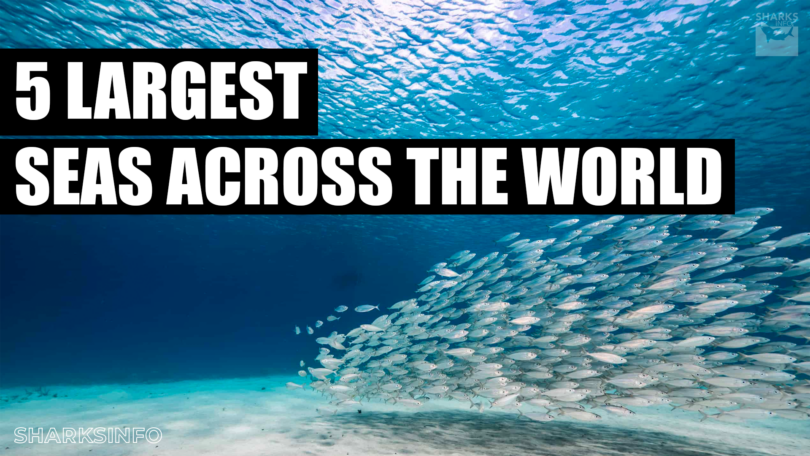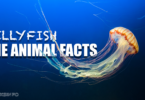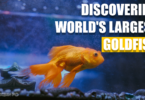71% of Earth’s surface is covered with water and it is present in the form of water bodies including oceans, seas, and bays. oceans and seas are interchangeable terms but geographically seas are different from oceans. seas are large water bodies but smaller than oceans and enclosed where land and ocean meet.
The seas are responsible for the functioning of the water cycle, trade through water transportation, regulating climatic conditions, and livelihood of marine species. The Earth contains approximately 50 seas, some of which are more popular as compared to others.
In this comprehensive guide, we will discuss the below-written outline:
- What is a Sea?
- What is an Ocean?
- Difference Between Ocean and Sea
- The 5 Largest Seas Across the World
What is a Sea?
The sea is a large water body that covers most of the surface of our planet. It is a part of the ocean that is surrounded by land. There is only one sea without any boundary, which is the Sargasso Sea and there are some scenarios where seas are completely covered with land, for example, the Caspian Sea.
What is an Ocean?
The ocean covers most of the surface area of Earth; it is a huge saltwater body that contains various basins on the surface of the Earth. The five major oceans are the Pacific, Arctic, Indian, Southern, and Atlantic oceans. The world’s largest ocean is the Pacific Ocean, while the world’s smallest ocean is the Arctic Ocean.
Difference Between Ocean and Sea
They both are made up of salt water but there are a few major differences between the ocean and sea, which are mentioned in the below table:
| Ocean | Sea |
| The ocean has more depth and area. | The sea has less depth and area. |
| They are not necessarily close to land. | They are located close to the land. |
| The ocean has less marine life as sunlight does not reach the depth of the ocean | The sea has more marine life as sunlight and it penetrates deeper in sea. |
| The Pacific Ocean covers a total area of 60 million square miles and is the largest ocean. | The largest sea is the Philippine Sea with an area of approx. 2,198,853 sq miles. |
The 5 Largest Seas Across the World
Below the table we have mentioned the five largest seas across the world with the area they cover:
| Sea | Area (sq miles) | Depth (m) | Deepest Depth (m) | Ocean |
| The Philippine Sea | 2,198,852 | 4500 | 10,578 | Pacific Ocean |
| The Coral Sea | 1,849,815 | 2400 | 9140 | South Pacific Ocean |
| The Mediterranean Sea | 965,000 | 1500 | 5,267 | Atlantic Ocean |
| The Arabian Sea | 1,491,127 | 2,734 | 4,652 | Indian Ocean |
| The Sargasso Sea | 1,351,358 | 1500 | 7000 | North Atlantic Ocean |

Let’s discuss the details of the largest seas one by one in the next section of this guide.
1: The Philippine Sea
The Philippine Sea is named after Spanish king Philip II and is the largest, beautiful sea in the world in terms of the area it covers. The approximately covered area of the Philippine Sea is 2,198,852 sq miles and is 4099.56m deep. This sea is part of the Northern Pacific Ocean and is bordered by the Ryukyu Islands, Japan, Taiwan, the Philippine Islands, and other small islands. The sea has the same salinity everywhere.
It is the home of the deepest sea trenches in the world among them the Philippine Trench and the Maria Trench, are the two trenches with the world’s deepest points. Apart from that it also comprises numerous active volcanoes at the bottom that often spew hot volcanic ash to the surface, many of which have a height of more than 3 km.

This sea is a million years old and is popular in the world for its rich biodiversity and marine life. It is the ideal location to see Whale sharks, the biggest fish in the world. It hosts more than 500 coral species and 20% of shellfish species of the world. In the Philippine Sea, multiple species of both soft and hard invertebrates, and a habitat for mysterious creatures such as Blobfish, Sperm Whales, and Megalodon.
It is the home of many deadly snakes, giant octopuses, sharks, and many turtle species.
2: The Coral Sea
The Coral Sea was named for its various coral formations and is a marginal sea of the South Pacific Ocean and the northeast coast of Australia. The sea covers an area of 1,850,000 sq miles, with an average depth of 2400m and a maximum depth of the sea is 9,140m.
This sea is characterized by its warm and stable climate and contains many reefs and islands. The Great Barrier Reef also exists in the Coral Sea; it is the world’s largest reef system with the most complex ecosystem. The reefs of the sea are rich in birds and aquatic life. The Red algae and many other colorful coral reefs are found throughout the sea.

The Coral Sea is known for its most varied and thriving marine life. It hosts multiple species of sponges, crayfish, prawns, anemones, crabs, and lobsters. There are at least 30 species of whales, dolphins, and porpoises, including the dwarf minke whale.
3: The Mediterranean Sea
The Mediterranean name originates from the Latin word “Mar Medi Terraneum” which means sea in the middle of the island. The Mediterranean Sea is the largest and the saltiest sea in the world and is located between Southern Europe, North Africa, and Asia. This sea is made up of two large basins and connects to the Atlantic Ocean. The water in the sea comes from the Atlantic Ocean and becomes saltier as the water from the sea does not evaporate.
The overall area covered by this sea is 965,000 sq mi. The average depth of this sea is 1500m with the deepest depth of 5,267m. The three layers of water in the Mediterranean Sea are a surface layer, an intermediate layer, and a deep layer.

The Mediterranean borders 22 different countries with 3000 total Islands. It is subdivided into several smaller seas that are all much smaller in size including the Alboran Sea, the Aegean Sea, and the Balearic Sea. It lies in the Herodotus Sea which contains the oldest stretch of seafloor today that is approximately 340 million years old.
The Mediterranean Sea is home to numerous wildlife species including Whales, Sharks, Dolphins, and Green turtles. The Mediterranean Sea is the breeding habitat of Atlantic bluefin tuna, which is the most demanding marine species in the world.
4: The Arabian Sea
The Arabian Sea is connected to the Indian Ocean’s northwestern part that connects Europe to Asia. The Arabian Sea provides an important link between the neighboring areas and is generally known as an important historical trade route. It is distinguished by the deep-water level and is present close to the land masses.
It covers a total area of approximately 1,491,000 sq miles. The depth of the Arabian Sea varies as it connects the Indian Ocean to the south, but the average approximate depth of the Arabian Ocean is 2734.05m. It is connected to other different seas including the Red Sea through the Strait of Bab-el-Mendeb, the Gulf of Eden, and the Persian Gulf via the Gulf of Oman.

The Arabian Sea is home to many pelagic fish and fishes that live near the surface of the water. The other famous species are the dragon blood tree, cucumber tree, Socotra cormorant, starling, and cucumber tree.
5: The Sargasso Sea
The Sargasso Sea is derived from the Portuguese word, named for a genus of freely floating seaweeds known as Sargassum that creates its unique ecosystem. The Sargassum is the only algae species living here. It is the only sea that is defined by ocean currents and lacks both seashores and a land border.
It is located in the middle of the North Atlantic Ocean and covers a total area of 1,351,358m, with a depth of 1500m to 7,000m.
This ocean is famous for its unique harbor species that freely float at the surface of the water and reproduce vegetatively on high seas. The famous Bermuda Triangle is also situated in the Sargasso Sea. The Sargasso Sea is less diverse compared to the other seas. There are numerous biomasses but the life forms living here are very low.
This sea is the safest place for numerous marine species, including Turtles and fishes. The Turtles provide their hatchlings with food and shelter on these Sargassum mats. The Sargassum also provides a protective habitat to other aquatic animals including shrimp, fish, and Crabs. The Endangered European eel and American eel migrate to the Sargasso Sea to breed.

This is all about from this guide.
Bottom Line
About 71% of the Earth is covered with water and this water is present in the form of different water bodies including seas and oceans. The sea is smaller than the oceans, but they are attached to oceans. The five largest seas of the earth based on the area are the Philippine Sea, the Coral Sea, the Mediterranean Sea, the Arabian Sea, and the Sargasso Sea. We have discussed the area, depth, and significant importance of these seas in the above section of this guide.







